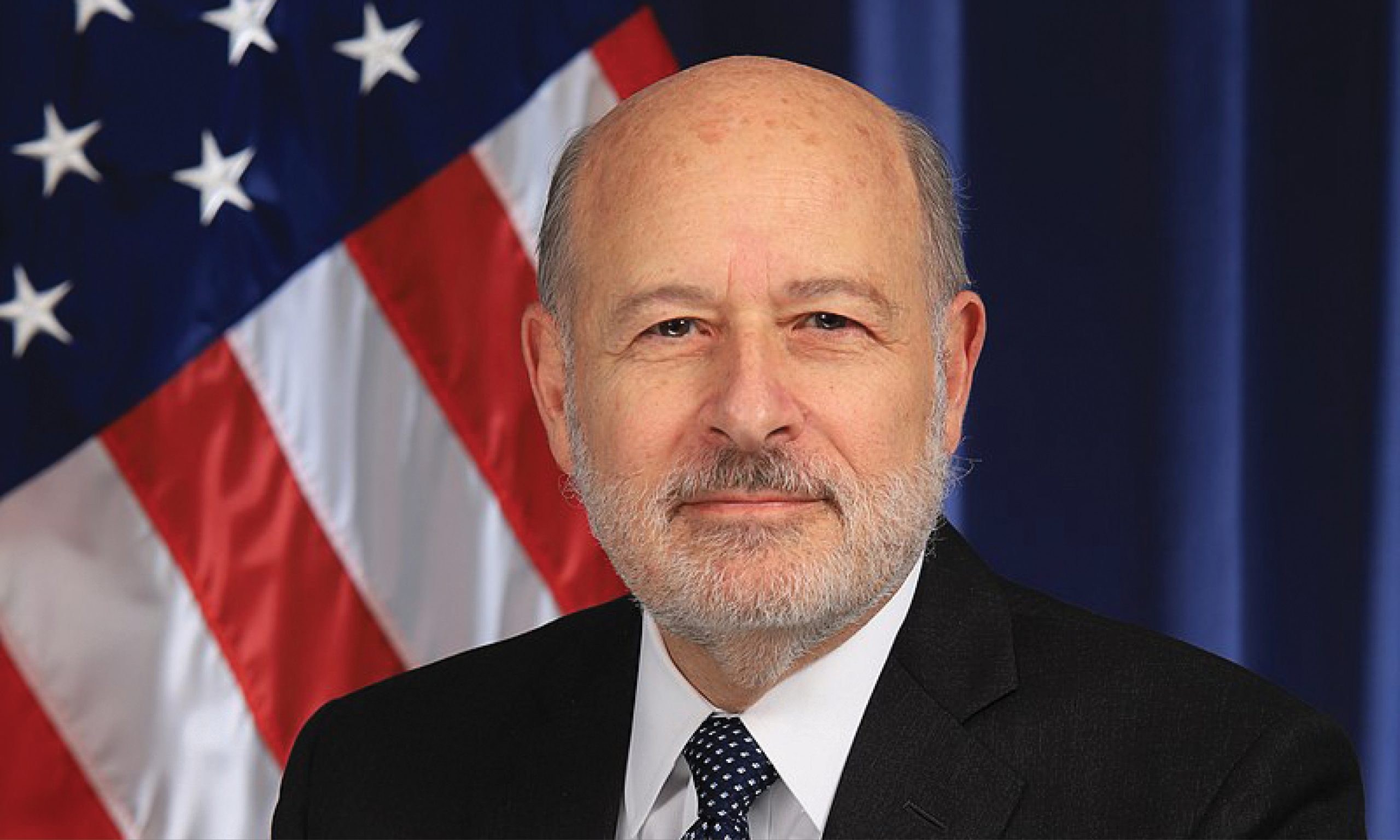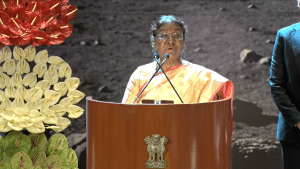In an exclusive conversation Dr. Rick Spinrad, Under Secretary of Commerce for Oceans and Atmosphere & NOAA Administrator sheds light on the crucial role of partnerships, space systems, and geospatial technologies to fight against climate change.
Pollution, Climate Change, and biodiversity loss have been recognized as triple planetary crises at the Cop28. What is the NOAA outlook to tackle all of these using advanced tech solutions?
First, let me say that tackling these challenges is core to NOAA’s mission. For more than 50 years, NOAA has been on the leading edge in efforts to conserve and manage coastal and marine ecosystems, wildlife, and resources, and to conduct critical research on the atmospheric and oceanic processes that drive our climate system. And part of our efforts involves researching and deploying advanced technologies.
For marine biodiversity loss, NOAA is involved in projects related to using passive and active acoustics, remote sensing via satellites and drones to monitor species. We are also deeply involved in the development and release of the National Aquatic eDNA Strategy, which will advance efforts to better understand aquatic life.
Using these new tools and others, NOAA is providing the observational and monitoring data necessary to track our progress in solving these crises.

For instance, since 2014, NOAA’s Integrated Ocean Observing System (IOOS) on behalf of the National Oceanographic Partnership Program (NOPP) and partner agencies (NASA, Bureau of Ocean Energy Management, Office of Naval Research) – has led interagency and non-federal partnerships to establish and sustain the US Marine Biodiversity Observation Network (MBON).
The MBON represents the sort of global, collaborative effect needed to collect and share marine life and biodiversity information necessary to ensure that decision-makers are informed. NOAA is also a core contributor to the White House’s Natural Capital Accounting of Ecosystem Services effort.
This work will help us understand and consistently track changes in the condition and economic value of land, water, air, and other natural assets and build them into a system of accounts that would be presented alongside other national statistics such as the Gross Domestic Product.
Integrating social scientists and other practitioners is an important part of developing and implementing new advanced solutions to the issues of pollution, climate change and biodiversity loss.
These diverse perspectives help us to better understand the impacts to society of these critical challenges, and how they map back to NOAA services and observations that are already in place. NOAA has teamed up with NASA, the U.S. Geological Survey, and the World Wildlife Fund to create a research consortium, the Collaborative Network for Valuing Earth Information, or CONVEI.
CONVEI will investigate how our agencies serve society from socioeconomic perspective, strongly considering how we can better support underserved and vulnerable, or frontline, communities.
Technological solutions will also play a pivotal role in tackling these challenges and NOAA will continue to lead a holistic approach from observations and research to tech deployment to working to make sure decision-makers have the information they need.
Modeled after the National Climate Assessment and written by federal, university and other leading scientists, the assessment will take a holistic approach to better understand the role of nature in the lives of people across the country, integrating science with traditional ways of knowing the needs of communities.
What role can the convergence of geospatial data and AI play in more precise weather monitoring and predictions?
NOAA is investing in AI in a variety of ways. With respect to weather monitoring and predictions, NOAA’s National Centers for Environmental Information (NCEI) recently added AI to its global climate monitoring dataset which improves the accuracy of NCEI’s surface air temperature reconstruction.
For the new version, NCEI scientists created an artificial neural network method that replaces the traditional empirical orthogonal teleconnection approach for the surface air temperatures over land and the Arctic Ocean.
This new method improves the accuracy of surface air temperature reconstruction. Improvements were larger in the Southern Hemisphere—especially Antarctica—and larger before the 1950s, which is directly associated with the availability of observations.
NOAA has recently signed an MoU with the US Patent and Trademark Office (USPTO) to boost innovation for advancing climate resilience across blue and green economies. What do you think are the key challenges in the path of sustainability and resilience?
While there are certainly challenges ahead, I’d like to think of the opportunities. Thanks to the Inflation Reduction Act and Bipartisan Infrastructure Law, we have historic investments which NOAA has been able to invest to build a climate smart, climate ready, and climate resilient nation.
These funds have allowed us to provide a direct injection of resources into our coastal communities through funding and technical assistance for capacity building, transformational adaptation and resilience planning, conserving and protecting fisheries and other critical resources, creating quality climate-ready jobs, and improving delivery of climate services to communities and businesses, all with a focus on environmental justice. With so much interest in building resilience, it can be a challenge to know just how much action is ongoing across the federal government.
This is why partnerships are vital. For instance, NOAA has signed a Memorandum of Understanding and Trademark Office aimed at encouraging innovation that advances NOAA’s goal of creating a climate-ready nation.
A key part of this is patenting new tools and technologies to monitor and track the climate as well as mitigate climate change. Together we’re finding ways to leverage the expertise across the U.S. government to advance climate resilience.
NOAA has launched its satellite this summer called GOES-U. What can we expect with this launch?
Like our other GOES-R Series satellites, GOES-U will provide advanced detection and monitoring of atmospheric, oceanic, climatic, solar and space data and phenomena that directly affect public safety and our nation’s economic prosperity.
GOES-U will be placed into the GOES East position once it reaches orbit and will monitor weather systems and environmental hazards affecting most of North America, including the continental United States and Mexico, as well as Central and South America, the Caribbean, and the Atlantic Ocean to the west coast of Africa. GOES-U will carry the Advanced Baseline Imager (ABI), which is the primary instrument on all of the GOES-R Series satellites for imaging Earth’s weather, ocean and environment.
It will also carry the Geostationary Lightning Mapper (GLM), which was the first operational lightning mapper flown in geostationary orbit when NOAA’s GOES-R Series launched. The satellite will also have something new onboard–the Compact Coronagraph-1 (CCOR-1). CCOR-1 images the solar corona (outer layer of the sun’s atmosphere) to detect and characterize coronal mass ejections.
CCOR-1 will help space weather forecasters detect and predict hazardous geomagnetic storms, which are the costliest type of space weather events and can cause widespread damage to power grids, satellites, and communication and navigation systems.
Tell me more about how NOAA satellites help save lives around the U.S. as part of a satellite assisted search and rescue network?
NOAA’s satellites, which are part of a network of U.S. and international satellites called COSPAS-SARSAT, helped save more than 350 lives in 2023.
These satellites carry specialized technology that detects distress signals from emergency beacons. NOAA SARSAT is an integral part and founding member of the international humanitarian search and rescue system called Cospas-Sarsat, which includes 45 nations and two independent search and rescue organizations.
The NOAA SARSAT system uses GPS technology in medium earth orbit as well as NOAA satellites in low-Earth orbits and NOAA’s GOES satellites in geostationary orbits to detect and locate distress signals from emergency beacons from aviators, mariners, and land-based users in distress. When an emergency beacon is activated, the signal is received by a satellite and relayed to the nearest available ground station.
The ground station forwards the signal to the U.S. Mission Control Center (USMCC) in Suitland, Maryland. The USMCC processes the distress signal and alerts the appropriate search and rescue authorities to who is in distress and, more importantly, where they are located. As of March 29, SARSAT has already helped rescue 53 people in the U.S. and its surrounding waters in 2024.











